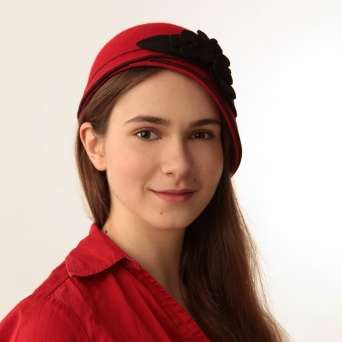Why don’t we see more Rimsky-Korsakov operas? The Golden Cockerel at Santa Fe Opera is the first time I’ve seen one near me, and I can’t understand why. The score is full of catchy tunes and instrumental flights of fancy, with the occasional lush chorus or instrumental lullaby. The plot, based on Pushkin’s last tale, is both ludicrous and allegorical. Despite its high body count, it lends itself well to a colorful, tongue-in-cheek treatment.
The lazy Tsar Dodon, tired of being always on his guard, accepts a gift from the mysterious Astrologer – a golden cockerel who will warn him of danger – and promises to grant a wish in return. When the cockerel crows, the Tsar goes off to war… and encounters not an enemy army, but the Queen of Shemakha, who quickly seduces him. The Tsar returns with his new bride-to-be, but the Astrologer appears to ask for his reward. He wants the Queen of Shemakha. The Tsar refuses and kills the Astrologer, so the loyal cockerel swoops down and pecks the Tsar to death. The Queen vanishes, and the Astrologer revives to deliver an epilogue.
In Santa Fe Opera’s production, directed by Paul Curran with sets and costumes by Gary McCann, comedy reigns. The Tsar emerges from the ground on an oversized throne, which he climbs onto and off of with mirth-inducing difficulty. A round figure in a red onesie, he is an oversized baby. He and his court all sport jewel-toned hair and beards: this is a fantastical world. In the third act, the king and queen transform; the blue beard vanishes, and they both don modern suits. (The courtiers around them still wear a whimsical version of historical Russian dress.) We are reminded that this is not just a fairy tale but a political morality play, a warning against warmongering and incompetent leaders who do not honor their commitments.
The magic is shown in projections. The wave-like curve of the stage provides an ideal surface, and the best moments make use of it with swirling patterns that cover the whole set. There are also comic bits where characters trying to reach projections on the curved wall slide back down. On the whole, this aspect of the production is underwhelming. The characters can’t interact with projected images to create comedy the way they do with the physical throne. The Astrologers’ entrances lack flash (though the real lightning in the Santa Fe sky behind the stage was a nice, if unplanned, touch). And a two-dimensional golden cockerel pecking someone to death is decidedly unthreatening.
Santa Fe Opera assembled an excellent cast of singing actors. As Tsar Dodon, Tim Mix showed off a smooth, even voice throughout his range. His character provoked plenty of laughs, whether he was struggling with his sword or ogling women. Venera Gimadieva sang the Queen of Shemakha with free coloratura, full sound, and a shimmering tone, particularly on her top notes. She danced and moved with graceful confidence, especially during her striptease (ingeniously costumed so that her dress could instantly become more and more revealing). Barry Banks sang the punishing tenor altino role of the Astrologer with clear and edgy sound. The Astrologer’s part is broken up, with constant entrances rather than sustained legato, but Banks handled it cleanly. His long falsetto note in Act 3 was surprising and fun.
Kevin Burdette sang a punched, bellowing General Polkan, not always mellifluous, but appropriate to his character. Meredith Arwady lent the spunky servant Amelfa her true contralto voice – no mezzo-soprano nonsense here! (And I write that as a mezzo.) Her huge, rich sound on her lowest notes gave me chills. Santa Fe Opera Apprentices also made notable contributions. Soprano Kasia Borowiec voiced the Golden Cockerel from offstage with ringing vibrato. Richard Smagur’s buttery-topped tenor suited the role of the idiotic Prince Guidon and contrasted nicely with Jorge Espino’s grainy baritone (for his equally stupid brother, Prince Afron).
The choruses were big and densely textured, and even the stomping was in perfect time! The final chorus of Act 3 was especially gorgeously harmonized and blended. Emmanuel Villaume led the orchestra in a precise performance. The opening trumpet solo fanfare was clear and grand, the pizzicato strings were playful, and the harp and celesta shimmered. Rimsky Korsakov’s score often gives individual instruments exposed melodies (usually whimsical); all were well delivered. Villaume’s slight tendency to luxuriate in the music rather than drive the action forward was forgivable in such a short and entertaining opera.




